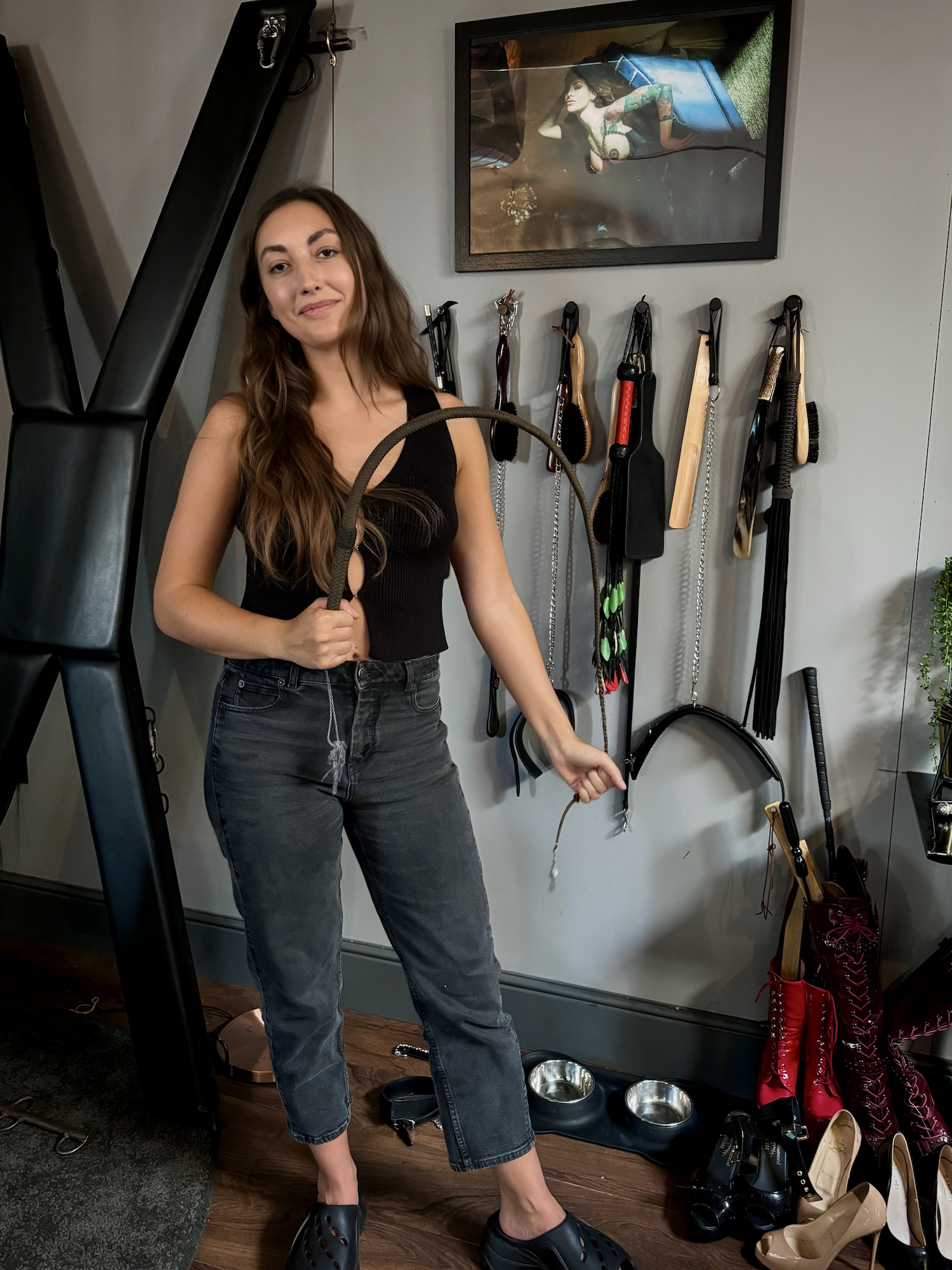Your Comprehensive Guide to the Femdom Lifestyle
The term femdom lifestyle often brings to mind specific images, but at its heart, it’s a dynamic rooted in clear communication, mutual respect, and a unique power exchange. It’s about consciously structuring a relationship where a woman takes the lead, and her partner finds fulfillment in a more submissive role. This isn’t just about fleeting moments but can be a continuous way of living and relating to one another. Exploring this lifestyle means diving deep into trust, understanding personal desires, and building a partnership that feels authentic to both individuals. This guide will explore the core principles of the femdom lifestyle, focusing on the emotional, psychological, and practical aspects that make it a fulfilling choice for many couples. We will unpack what it means to live this way, how to start, and the importance of communication and consent every step of the way, all while keeping the discussion educational and focused on healthy relationship dynamics.
Key Takeaways
- The femdom lifestyle is a relationship structure where a woman holds the primary authority, built on a foundation of trust, consent, and open communication.
- It is not limited to specific activities but can be integrated into all aspects of daily life, from making decisions to managing household duties.
- Clear and continuous communication is the most critical element for a healthy and sustainable femdom lifestyle, ensuring both partners feel safe, heard, and respected.
- Establishing firm boundaries is essential. These rules and limits protect both partners and create a safe space for the dynamic to flourish.
- This lifestyle challenges traditional gender roles and offers a path for couples to explore a power dynamic that feels more natural and fulfilling to them.
- Finding community and reliable educational resources can be invaluable for beginners and experienced participants alike, providing support and new perspectives.
What is a Femdom Lifestyle?
At its core, a femdom lifestyle is a relationship dynamic where a woman, often called the dominant or Dominant, holds the primary leadership role. Her partner, the submissive, willingly and enthusiastically accepts this structure. This arrangement goes beyond occasional role-playing and becomes an integrated part of the couple’s daily existence. It can influence everything from major life decisions, like career moves and finances, to everyday routines, such as who cooks dinner or manages the social calendar. It’s a conscious choice to shift traditional power balances in favor of a female-led dynamic. This lifestyle is built on a deep foundation of trust and mutual agreement. The submissive partner isn’t being forced into their role; rather, they find genuine happiness, security, and freedom in surrendering control to a partner they trust implicitly. The femdom lifestyle is incredibly diverse and looks different for every couple, tailored to their unique personalities, desires, and agreements.
Differentiating Lifestyle from Play
It’s important to understand the difference between engaging in femdom “play” and living a full-time femdom lifestyle. Play often refers to specific, time-boxed scenes or activities where the power exchange is heightened for a set period. It’s a part of the relationship but not necessarily its constant state. In contrast, a lifestyle integration means the dynamic is always “on,” 24/7. The female-led structure is the default setting for the relationship. This doesn’t mean the dominant partner is always acting in an authoritative manner; it simply means her authority is the accepted foundation of their partnership. For example, in a play-based dynamic, a couple might engage in a scene on a Saturday night. In a femdom lifestyle, the submissive partner might start their day by making their dominant partner’s coffee exactly how she likes it, not as a special act, but as a normal part of their loving routine and established dynamic. This continuous nature requires an even deeper level of commitment, communication, and understanding than occasional play.
The Core Principles of a Healthy Femdom Lifestyle
A sustainable and positive femdom lifestyle is not about control in a negative sense; it’s about a structured exchange that benefits both partners. The foundation rests on several key principles that ensure the dynamic remains healthy, respectful, and fulfilling. First and foremost is enthusiastic consent. This means both individuals are actively and eagerly agreeing to the dynamic and all its components. It’s a continuous conversation, not a one-time agreement. Trust is equally vital. The submissive partner must have complete trust in the dominant’s judgment, care, and intentions, knowing she will lead with their best interests at heart. In turn, the dominant must trust the submissive to be honest about their feelings and limits. Finally, mutual respect underpins every interaction. The power exchange does not diminish the value or worth of the submissive partner; instead, it’s a role they have chosen and find honor in. Without these pillars, the structure can become unhealthy and unsustainable.
The Role of Communication
Communication is the absolute lifeblood of any femdom lifestyle. It’s not just important; it is the most critical element for success and safety. Because this dynamic involves a deliberate power imbalance, the potential for misunderstanding or hurt feelings is significant if communication channels are not crystal clear and constantly open. Partners need to be able to talk about everything: desires, fears, limits, and day-to-day feelings. Regular check-ins are essential. This could be a scheduled weekly meeting to discuss the relationship, how the dynamic is feeling, and any adjustments that need to be made. It’s a space where the submissive can and should feel completely safe to express themselves without fear of punishment or judgment. Great communication in a femdom lifestyle involves active listening from both sides, ensuring each person feels heard and understood. It’s through this constant dialogue that trust is built and the relationship can evolve in a healthy way.
Establishing Boundaries and Safe Words
Boundaries are the rules of the road in a femdom lifestyle. They are the non-negotiable limits that protect both partners. Before embarking on this journey, couples should have in-depth conversations about what is on and off the table. These are known as “hard limits” (things that will never be done) and “soft limits” (things that might be explored with caution). These boundaries should be written down and revisited periodically, as feelings can change over time.
A crucial component of boundary setting is the use of a safe word. A safe word is a pre-agreed-upon word or phrase that can be used at any time to immediately stop all activity. It is a signal that a real limit has been reached, physically or emotionally. The most common system is:
- “Yellow”: Slow down, I’m approaching a limit.
- “Red”: Stop completely. This is a hard limit.
When a safe word is used, all dynamic-related activity ceases, and partners return to being equal, caring individuals to discuss what happened. This mechanism is non-negotiable and ensures the submissive always retains ultimate control over their own well-being.
Exploring Roles Within the Dynamic
The labels “dominant” and “submissive” are just starting points. Within a femdom lifestyle, these roles can be expressed in countless ways, tailored to the individuals’ personalities and preferences. The dominant partner is the leader, the decision-maker, and the one who sets the tone and structure of the relationship. This role requires immense responsibility, empathy, and a deep understanding of her partner. It’s not about being bossy or cruel; it’s about guiding the relationship with a firm but loving hand. She is the anchor and the director.
The submissive partner finds joy and peace in relinquishing control. Their role is one of service, obedience, and devotion. This is an active, not passive, choice. Submission requires great strength, trust, and self-awareness. The submissive is not a doormat; they are a dedicated partner who actively supports their dominant’s vision for their shared life. Their happiness comes from pleasing their partner and finding freedom in not having to bear the burden of constant decision-making. The beauty of the femdom lifestyle lies in how these roles are customized to fit the unique puzzle pieces of the two people involved.
Common Role Variations
The femdom lifestyle is not one-size-fits-all. The expression of dominance and submission can vary greatly. Some relationships may have a very high protocol, with formal titles (like “Mistress” or “Sir”), specific rules for speaking, and defined daily rituals. In this structure, the power exchange is very explicit and ever-present. For example, the submissive might be required to kneel when addressing their dominant or follow a strict dress code at home.
Other couples may prefer a more subtle, low-protocol dynamic. In these relationships, the female-led structure is understood but not always overtly demonstrated. She is the ultimate authority, but interactions may feel more like a traditional partnership on the surface. Her decisions are final, but the day-to-day may be more relaxed. Many couples find a happy medium, blending formal rituals with a more casual daily life. The key is finding the style that resonates with both partners and enhances their connection, rather than trying to fit into a preconceived notion of what a femdom lifestyle should look like.
Integrating the Femdom Lifestyle into Daily Life
Bringing a femdom lifestyle into the everyday is where the dynamic truly comes alive. It moves from theory to practice. This integration can be subtle or overt, depending on the couple’s agreement. It often starts with small, manageable changes. For instance, the dominant partner might take full control over the household finances, creating a budget and giving the submissive an allowance. This is a practical application of the power exchange that reinforces the roles daily. Another common area is decision-making. From choosing what to have for dinner to planning vacations, the dominant takes the lead, freeing the submissive from the mental load of making these choices. Chore allocation is also a popular method of integration. The submissive might be assigned specific tasks to complete as a form of service, ensuring the home runs smoothly according to the dominant’s standards. These everyday acts build a consistent rhythm and reinforce the loving power exchange that defines the femdom lifestyle.
Rituals and Routines
Rituals and routines are powerful tools for strengthening a femdom lifestyle. They create consistency and provide regular opportunities to honor the dynamic. These can be simple or elaborate. A morning ritual, for example, could involve the submissive bringing the dominant her coffee or tea in bed, reporting on the day’s schedule, and asking if she has any specific instructions for them. This starts the day by immediately reinforcing their respective roles. An evening ritual might involve a debrief of the day, where the submissive reports on their tasks and the dominant provides feedback or praise. This fosters accountability and connection.
Other routines could be weekly, such as a designated “service Sunday” where the submissive performs deeper cleaning tasks or a “date night” planned entirely by the dominant. These structured moments are not just about completing tasks; they are about mindfully engaging in the dynamic. As some experts on relationship structures note, you can find more discussions on this topic at https://versaillesblog.com/. These rituals help ground the relationship in its chosen structure and provide comfort and stability for both partners, making the femdom lifestyle a tangible and rewarding part of their shared reality.
Communication in a Female-Led Relationship
While we’ve touched on communication, its importance in a femdom lifestyle cannot be overstated. It must be more intentional, more frequent, and more honest than in almost any other relationship structure. Because one partner is willingly ceding power, it’s the dominant’s responsibility to create an environment where the submissive feels 100% safe to be vulnerable and truthful. This means actively soliciting feedback and checking in on their partner’s emotional state. Questions like, “How are you feeling about our dynamic this week?” or “Is there anything you need from me that you aren’t getting?” should be common.
Conversely, the submissive has a responsibility to be radically honest. Hiding feelings of discomfort, resentment, or sadness to avoid displeasing their dominant is a recipe for disaster. This erodes trust and can lead to serious emotional harm. A healthy femdom lifestyle requires the submissive to trust that they can voice concerns without retribution. This open dialogue is what allows the dynamic to be flexible and adapt to the evolving needs of both people.
Navigating Disagreements and Conflicts
No relationship is without conflict, including those built on a femdom lifestyle framework. Disagreements will happen. The key is how they are handled. In a female-led dynamic, the ultimate decision-making authority rests with the dominant. However, this does not mean the submissive’s feelings or opinions are ignored. When a conflict arises, a structured approach is often best. The dominant should provide a calm, safe space for the submissive to express their point of view fully and without interruption. She should listen with empathy, seeking to understand their perspective.
After hearing them out, she will consider their input and make a final decision. It is then the submissive’s role to accept that decision gracefully, trusting that she has acted with the couple’s best interests in mind. This process respects the submissive’s voice while upholding the agreed-upon power structure. If a conflict touches on a pre-established boundary or limit, the conversation must pause the dynamic and return to one between equals until the issue is resolved. This ensures that the foundational safety of the relationship is never compromised.
Misconceptions About the Femdom Lifestyle
The femdom lifestyle is widely misunderstood, with many myths and stereotypes clouding public perception. One of the biggest misconceptions is that it’s inherently abusive or that the submissive partner is being taken advantage of. In reality, a healthy femdom lifestyle is based on enthusiastic consent and deep mutual respect. The submissive is not a victim; they are a willing and empowered participant who finds fulfillment in their role. Another common myth is that all women who are dominant in their relationships are cold, cruel, or unloving. This is far from the truth. A successful dominant is often deeply empathetic, caring, and nurturing. Her leadership comes from a place of love and a desire to create a secure and happy life for her partner. It’s a form of protective guidance, not tyranny. These stereotypes are harmful and ignore the loving, committed partnerships that thrive within this dynamic.
Is the Femdom Lifestyle Only for Certain People?
There is a prevalent misconception that the femdom lifestyle is only for a specific “type” of person or is exclusive to certain communities. The reality is that it appeals to people from all walks of life, regardless of age, profession, or background. There is no single personality profile for a dominant woman or a submissive man. A high-powered female CEO might enjoy a submissive role at home, while a quiet librarian might be a powerful dominant in her relationship. The desire for a female-led dynamic is about internal wiring and relationship preferences, not external labels. Furthermore, while the most discussed version is a heterosexual one, the principles of a femdom lifestyle can be and are applied in same-sex relationships and other queer dynamics as well. It’s about a power exchange between two consenting individuals, and the specific genders of those involved are less important than their commitment to the shared structure.
Getting Started: Tips for Beginners
For couples curious about exploring a femdom lifestyle, the prospect can feel both exciting and overwhelming. The key is to start slowly and communicate constantly. Don’t try to implement a 24/7 dynamic overnight. Begin by reading and researching together. Understand the core principles of consent, trust, and communication. Have long, honest conversations about what appeals to each of you about this dynamic. What are your desires? What are your fears? This foundational work is non-negotiable.
A great first practical step is to experiment with small, temporary power exchanges. For example, agree that for one evening, the woman will make all the decisions, from what’s for dinner to what to watch on TV. The man’s role is simply to obey cheerfully. Or, you could try a weekend-long experiment. This allows you to dip your toes in the water without the pressure of a full-time commitment. After each experiment, have a detailed debrief. How did it feel for each of you? What did you like? What felt uncomfortable? This gradual approach allows you to build the dynamic thoughtfully and sustainably.
Finding Resources and Community
Embarking on a femdom lifestyle can feel isolating if you don’t know where to look for support. Fortunately, there are many resources available for learning and connection. Online forums, blogs, and social media groups dedicated to female-led relationships can be invaluable. They provide a space to ask questions, share experiences, and learn from others who are further along on their journey. Look for communities that emphasize safety, consent, and healthy communication. Reputable podcasts and books on the topic can also offer deep insights and practical advice.
Connecting with others can help normalize your desires and provide a sense of belonging. It shows you that you are not alone in choosing this path. When seeking community, always prioritize your safety and privacy. Start by lurking and reading to get a feel for the group’s culture before you start sharing personal details. A supportive community can be a fantastic resource, offering encouragement and perspective as you build your unique femdom lifestyle.
Comparing Key Aspects of Relationship Dynamics
To better understand where the femdom lifestyle fits, it can be helpful to compare it to a more traditional relationship structure. This table highlights some of the key differences in approach.
|
Feature |
Traditional Relationship |
Femdom Lifestyle Relationship |
|---|---|---|
|
Decision-Making |
Often shared or defaults to the male partner. |
Primarily led by the female partner. |
|
Power Structure |
Implicit, often mirroring societal gender norms. |
Explicit and intentionally female-led. |
|
Primary Goal |
Partnership based on equality and shared responsibility. |
Partnership based on a loving power exchange. |
|
Communication |
Important for resolving conflict and sharing feelings. |
The absolute foundation for safety, trust, and function. |
|
Roles |
Loosely defined, can be flexible or traditional. |
Clearly defined and agreed-upon roles (Dominant/submissive). |
|
Consent |
Implied in the overall relationship commitment. |
Explicit, enthusiastic, and continuously negotiated. |
This comparison illustrates that the primary difference is the intentional and explicit structuring of power, which is the defining feature of a femdom lifestyle.
The Long-Term Vision for a Femdom Lifestyle
A femdom lifestyle is not a phase; for many, it is a lifelong commitment to a relationship structure that brings them profound happiness and stability. The long-term vision involves a deep, evolving partnership where the power dynamic matures along with the couple. As trust deepens over years, the need for overt rules may lessen because the dynamic becomes second nature. The dominant’s authority is so ingrained and respected that it doesn’t need constant reinforcement. The submissive’s service becomes a seamless part of their shared life, a constant, quiet hum of devotion.
In the long term, the lifestyle supports mutual growth. The dominant partner is continually challenged to be the best leader she can be—compassionate, wise, and fair. The submissive partner is continually challenged to practice trust, humility, and dedication. Together, they build a life that is uniquely theirs, a sanctuary built on their specific agreement. The goal is to create a sustainable ecosystem of love, respect, and power exchange that will carry them through all of life’s stages, from raising a family to retirement, always grounded in the principles of their chosen femdom lifestyle.
Conclusion
The femdom lifestyle is a deeply personal and rewarding path for couples who find fulfillment in a female-led dynamic. Far from the negative stereotypes, it is a relationship structure built on the strongest foundations: unwavering trust, enthusiastic consent, and constant, open communication. It’s about consciously designing a life that honors the unique desires and strengths of both partners, creating a powerful synergy where one leads and the other finds freedom in following. By starting slowly, establishing clear boundaries, and prioritizing communication above all else, couples can build a healthy, sustainable, and loving femdom lifestyle. It is a journey of mutual respect and shared goals, offering a valid and beautiful alternative to traditional relationship models for those who feel called to it.
Frequently Asked Questions (FAQ)
1. Is the femdom lifestyle all about strict rules and punishment?
Not at all. While some couples enjoy a high degree of structure and protocol, many others have a very relaxed dynamic. The femdom lifestyle is about the woman having the final say and leading the relationship, but this leadership is typically expressed through love, guidance, and care. Discipline, if used, is a tool for growth that is discussed and consented to, not a means of cruelty. The core is about creating a happy, stable life together.
2. Can a couple have a healthy femdom lifestyle and still be equals?
This is a great question. While the dynamic involves a power imbalance, the individuals themselves are always equal in worth and humanity. The submissive partner chooses to cede power in certain areas of the relationship because it brings them happiness and fulfillment. They always retain their ultimate autonomy and can end the dynamic at any time. The respect is mutual, even if the roles are different. It’s a partnership of equals who have agreed to unequal roles.
3. What if the man is a strong-willed person in his professional life?
This is very common. Many men who hold high-powered, stressful jobs find immense relief and peace in a femdom lifestyle. Being able to come home and relinquish the burden of decision-making to a trusted partner can be a powerful way to de-stress and recharge. Submission is a choice and a skill, not a sign of weakness. For these men, it’s a complementary balance to their public-facing lives.
4. Does the woman have to be dominant in all areas of life?
No, it’s completely customizable. A couple might decide that the woman has authority over finances, social life, and household matters, but the man retains authority in his areas of expertise, like car maintenance or investing. The key is that this allocation of power is her decision. The femdom lifestyle is a flexible framework that couples adapt to their specific needs and skills, ensuring the partnership runs smoothly and efficiently under her overall direction.
5. How do you explain a femdom lifestyle to friends and family?
The simple answer is: you don’t have to. Your relationship dynamic is a private matter between you and your partner. To the outside world, you can simply present as a loving couple where the woman is a confident decision-maker. Most aspects of a femdom lifestyle are not visible to outsiders. If you do choose to share, you can frame it as a partnership where you’ve found a structure that works best for you, emphasizing that it’s based on mutual respect.
6. Can you switch roles in a femdom lifestyle?
While some couples who engage in “switching” exist, it is not typical for a relationship defined as a femdom lifestyle. The foundation of this lifestyle is the stable, consistent structure of a female-led dynamic. The consistency is often what provides the sense of security and peace that both partners seek. Flipping the roles would fundamentally change the dynamic, so it’s not a common practice for those living this as a 24/7 lifestyle.
7. Is a femdom lifestyle compatible with raising children?
Yes, absolutely. Many couples in a femdom lifestyle have happy, healthy families. The clear structure and communication skills honed in this dynamic can actually be beneficial for parenting. The children see a model of a strong, decisive mother and a supportive, respectful father. The relationship’s private dynamics do not need to be explicitly shared with children; they will simply experience a stable home with loving parents who have clearly defined roles that work for them.
8. What is the most important piece of advice for a beginner couple?
Communicate more than you think you need to. Talk about everything: your hopes, your fears, your limits, and your desires. Before you even start, and every single day after. A femdom lifestyle thrives on transparency and trust, and that can only be built through honest and continuous conversation. It is the single most important factor for building a happy, healthy, and lasting female-led relationship.














Post Comment